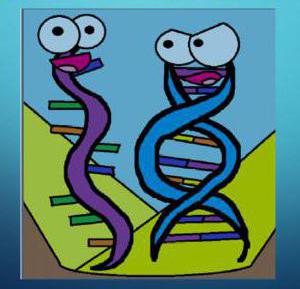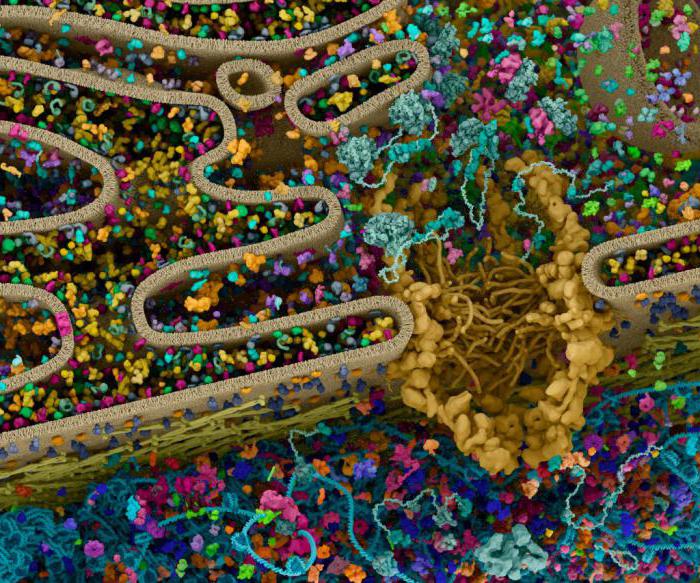
The first inhabitants of our planet, most likely,had a very short life expectancy. The evolutionary direction of all living things went towards increasing the life span of the organism for successful adaptation to environmental conditions, developing adaptation mechanisms and the possibility of transferring the accumulated experience to subsequent generations. The creation of organic molecules in accordance with the planned plan allowed life on Earth to gain a foothold and begin a successful development. The mechanism of matrix storage and transmission of hereditary information has been transformed into a system of genetic coding, where the main component is the functional unit of the genetic code.

Heredity is the main biologicalcomponent of the continuity of life. Nature has created mechanisms for the transmission and reproduction of hereditary information by encoding the protein composition in the nucleic acid chain. Functions of nucleic acids (DNA and RNA) - preservation of information and its transfer to the structure of proteins. And proteins through the reactions of metabolism realize the phenotypic manifestation of this information. The genetic code is the matrix linear preservation of information about the structure of a protein by recording it with triplets of nucleotides in a chain of nucleic acids. The smallest functional unit of the genetic code, containing information about the minimal structural unit of proteins, is a triplet of nucleotides in the DNA or RNA chain. The transfer of information proceeds from DNA to mRNA, and from mRNA to other RNAs and to protein molecules.
The understanding of the genetic code in science has gonecentury, and its decoding - only decades. Since the concept of the structure of the double helix DNA (Watson and Creek, 1953) came to understand its role as a hereditary material, and began to search for those letters of the alphabet, which recorded information on it. The idea that the functional unit of the genetic code 1 nucleotide could not stand the criticism at once. Four complementary nucleotides (adein, guanine, cytosine and thymine) DNA could not provide the encoding of 21 amino acids of proteins. Mathematicians, physicists and biologists were actively involved in the search for a coding system and quickly found out that one amino acid encodes a sequence of three nucleotides. Thus, the functional unit of the genetic code is a triplet of nucleotides, which is responsible for the synthesis of one amino acid of the protein. Triplets (codons) total 64, 61 of them are semantic codons (encode amino acids), and the remaining 3 - meaningless. They do not carry information about the amino acid, but act as stop codons terminating or initiating the synthesis of the protein molecule.

The biopolymer molecule of nucleic acids consists offrom monomers - nucleotides. Those in turn create a continuous DNA, with which during the transcription process the information is transferred to the mRNA in accordance with the reading frame, where the triplet of nucleotides - triplet - has the least code value. The reading frame moves unidirectionally, and the genetic code has a clear unambiguousness and degeneracy (redundancy).
The triplet information is unambiguous, that isthe ratio of 1 triplet-1 amino acid is not variable. An amino acid can be encoded with several triplets, but a specific triplet is a specific amino acid. The reading frame is always directed in the same direction, and this is due to the presence of triplets initiating the reading and ending it. So the stability of the structure of the protein remains. Another property of triplets is non-overlapping. This means that the nucleotide is a part of the triplet, but only one.

The degeneracy (redundancy) of the genetic code -it's like a reserve of strength of the body. He protects the cell from the destructive effect of mutations. Each functional unit of a genetic code can undergo substitutions of 1, 2 and 3 nucleotides in a triplet. Thus, 9 positional replacements in each triplet, replacement of each nucleotide by 4-1 = 3 possible variants, and as a result we get 61 at 9 = 549 variants of replacing the nucleotide in the triplet. This is much more than necessary to encode 21 amino acids. This overabundance, or degeneracy, and ensured the biological existence of life and minimizing errors in the reading of genetic information.

In the literature, a triple of nucleotides, likea functional conglomerate, is called a triplet or codon. What is the difference and is it? The term "codon" is used in the direct translation process - the transfer of information from RNA to a protein molecule. The term "triplet" is used in a broader semantic context, when describing the framework for reading information with both RNA and DNA.
</ p>>